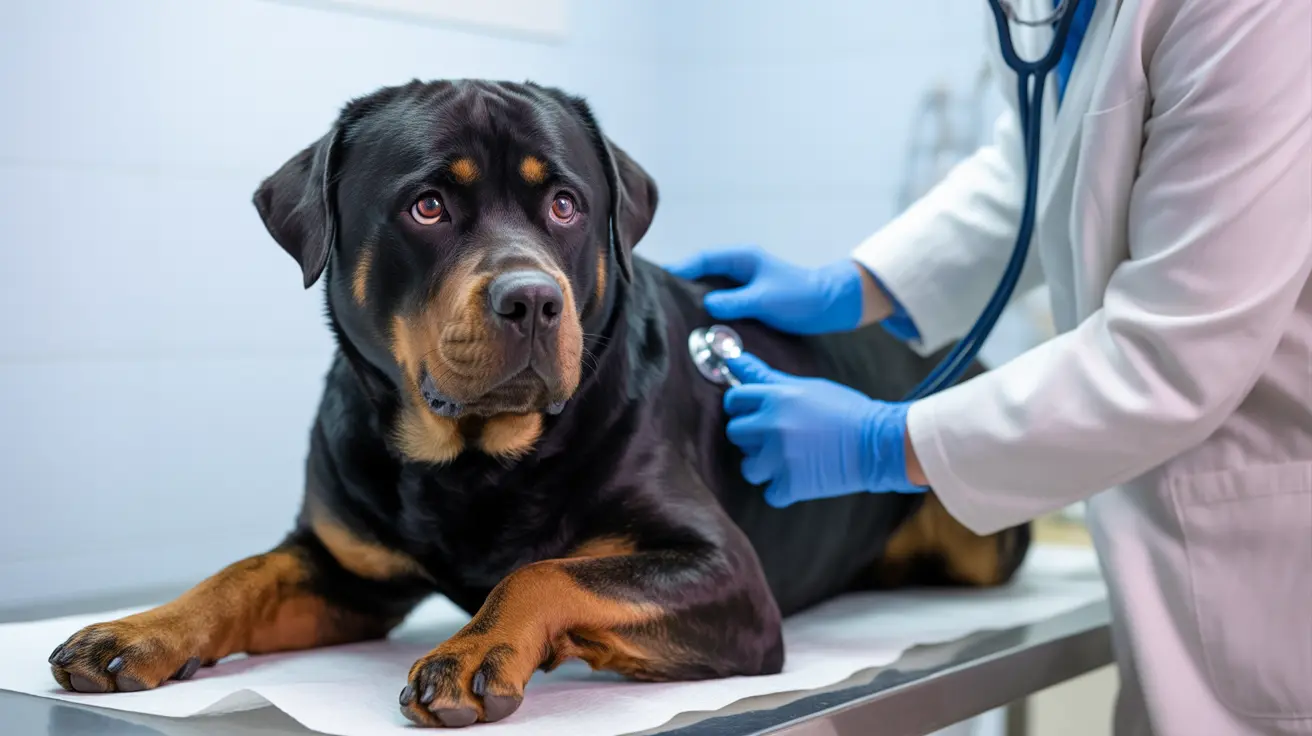What is Pulmonary Thromboembolism?
Pulmonary thromboembolism (PTE) in dogs is a serious and potentially life-threatening condition where blood clots block the arteries in the lungs. This blockage disrupts normal blood flow and oxygen delivery throughout the body, creating an immediate medical emergency that requires swift veterinary intervention.
While this condition can affect any dog, it's particularly common in those with underlying health issues such as heart disease, cancer, or immune-mediated conditions. Understanding the signs, causes, and treatment options is crucial for dog owners, as early recognition can make a significant difference in survival rates.
Common Causes and Risk Factors
Several underlying conditions can predispose dogs to developing pulmonary thromboembolism:
- Immune-mediated hemolytic anemia (IMHA)
- Cancer (particularly advanced stages)
- Heart disease
- Cushing's disease
- Protein-losing conditions
- Recent surgery or trauma
- Severe infections or sepsis
Dogs with multiple risk factors require careful monitoring, as they're more likely to develop this serious condition. Regular veterinary check-ups and proper management of underlying conditions can help reduce the risk.
Recognizing the Signs
The symptoms of pulmonary thromboembolism often appear suddenly and can be severe. Common signs include:
- Difficulty breathing or rapid breathing
- Coughing (sometimes with blood)
- Blue-tinged gums
- Weakness or collapse
- Elevated heart rate
- Anxiety and restlessness
- Excessive panting
These symptoms require immediate veterinary attention, as they can quickly become life-threatening. The sooner treatment begins, the better the chances of survival.
Diagnosis and Testing
Diagnosing pulmonary thromboembolism can be challenging and often requires multiple diagnostic tools:
- Blood tests (including D-dimer levels)
- Chest X-rays
- CT angiography
- Echocardiography
- Blood gas analysis
Your veterinarian will likely recommend several of these tests to confirm the diagnosis and determine the extent of the condition. Some cases may require referral to a veterinary specialist for advanced imaging or treatment.
Treatment Approaches
Treatment for pulmonary thromboembolism typically involves multiple strategies:
- Oxygen therapy
- Anticoagulant medications
- Treatment of underlying conditions
- Supportive care
- Close monitoring in a veterinary hospital
The specific treatment plan will depend on the severity of the condition and any underlying health issues. Some dogs may require intensive care for several days or weeks.
Long-term Management and Prevention
After initial treatment, ongoing management is crucial for preventing future episodes. This may include:
- Regular medication administration
- Frequent veterinary check-ups
- Monitoring for new symptoms
- Management of underlying conditions
- Lifestyle modifications as recommended by your vet
Frequently Asked Questions
What are the most common signs of pulmonary thromboembolism in dogs?
The most common signs include sudden difficulty breathing, rapid breathing, weakness, collapse, blue-tinged gums, coughing, and excessive panting. These symptoms typically appear suddenly and require immediate veterinary care.
How is pulmonary thromboembolism diagnosed in dogs, and what tests does my vet need to do?
Diagnosis typically involves multiple tests, including blood work, chest X-rays, CT scans, and blood gas analysis. Your vet may also perform an echocardiogram to assess heart function and look for underlying conditions.
What causes blood clots in the lungs of dogs and which breeds are most at risk?
Blood clots can form due to various conditions, including immune-mediated diseases, cancer, heart disease, and severe infections. While any breed can be affected, the condition is more common in dogs with underlying health issues rather than specific breeds.
What is the treatment for pulmonary thromboembolism in dogs and can it be cured?
Treatment typically includes oxygen therapy, anticoagulant medications, and management of underlying conditions. While some dogs can recover with prompt treatment, the prognosis depends on the severity of the condition and response to therapy.
What should I do if I suspect my dog has a blood clot in the lungs?
If you suspect your dog has a pulmonary thromboembolism, seek emergency veterinary care immediately. This condition is life-threatening and requires immediate professional medical attention.
Conclusion
Pulmonary thromboembolism in dogs is a serious condition that requires prompt recognition and treatment. While it can be life-threatening, understanding the signs and risk factors can help owners seek timely veterinary care, potentially improving their pet's chances of survival. Regular veterinary check-ups and proper management of underlying conditions remain the best strategies for prevention.






